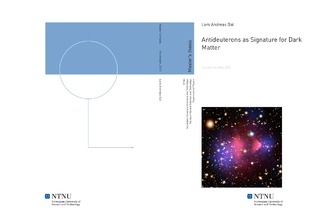Antideuterons as Signature for Dark Matter
Master thesis
Permanent lenke
http://hdl.handle.net/11250/246403Utgivelsesdato
2011Metadata
Vis full innførselSamlinger
- Institutt for fysikk [2695]
Sammendrag
In this thesis, we examine the antideuteron spectra from annihilations of dark matter in the form of Weakly Interacting Massive Particles (WIMPs). The so-called coalescence model is commonly used to describe the production of antideuterons. This model can be applied directly within a Monte Carlo simulation, but traditionally, approximations have been made that allow coalescence to be applied to the produced nucleon energy spectra after the simulation is done. The traditional approach is based on the assumption that the nucleons produced have isotropically distributed momenta, and is still commonly used today.We find that the assumption of isotropy does not hold; the final state particles from WIMP annihilations are confined in jets, something which increases the antideuteron yield. This effect is missed by the traditional approach, and using the direct implementation of the coalescence model leads to an order of magnitude enhancement of the antideuteron yield. Furthermore, we find that incorrect treatment of input gauge bosons as on-shell particles in Monte Carlo generators lead to underestimates of the antideuteron flux from WIMP annihilations into gauge bosons. This effect is particularly important when using the traditional application of the coalescence model.We also consider the contributions to the antideuteron spectrum from higher order annihilation processes, and find that for the lightest MSSM neutralino as WIMP candidate, these contributions are likely to become important for neutralino masses in the TeV range.
